Description
The joy of fermented foods is that, as well as being good for your health, its contain very few processed ingredients when made of low-tech. Additionally, its diversify our diet by enriching it (in terms of flavour and nutrients).
Sommaire
Sommaire
- 1 Description
- 2 Sommaire
- 3 Introduction
- 4 Video d'introduction
- 5 Étape 1 - Hygiene rules
- 6 Étape 2 - Plant-based dairy products
- 7 Étape 3 - Replace the egg white with aquafaba (legumes)
- 8 Étape 4 - Vegetable steaks
- 9 Étape 5 - Vegetable stuffing, meatballs and sausages
- 10 Étape 6 - Cod brandade-style white bean gratin and fishless acras
- 11 Étape 7 - Imitation breaded fish or breaded escalopes
- 12 Étape 8 - Pâtés, rillettes and cakes in vegetable recipes (including imitation fish)
- 13 Étape 9 - Imitation foie-gras spread and medallion
- 14 Étape 10 - Fermented carrots imitating smoked salmon
- 15 Étape 11 - Sushi, maki and spring rolls without fish
- 16 Notes et références
- 17 Commentaires
Introduction
Fermented foods are foods that have been transformed by micro-organisms: bacteria, yeasts, mushrooms. This process often takes place without oxygen, in an anaerobic environment. Microbes normally multiply in the presence of oxygen. But when they are deprived of it, they fight back by producing molecules to gain an advantage over competing microbes: alcohol, lactic acid, acetic acid. This gives rise to various types of fermentation: lactic, alcoholic, acetic, etc. Although we sometimes tend to forget it, many everyday foods are in fact fermented: bread, cheese, yoghurt, sauerkraut, sausage, wine, beer... The list goes on. That's a good thing because their effects are beneficial to health !' They aid digestion, help the intestines to function properly, are sources of vitamins and minerals, and boost the immune system...
As Virginie Geres reminds us with her website HappyBiote, without micro-organisms we'd be dead! Quite simply! We couldn't function without the billions of bacteria, yeasts and other (non-pathogenic) microbes that line our bodies. They carry out important tasks such as protecting us from aggression from other (pathogenic) microbes, allowing us to eat, to have a distinct smell from other people (and therefore making it easier to fall in love when we're not too dirty), they participate in our immune system... And in each of our cells is a microorganism that we have incorporated over the millennia: the mitochondrion, which enables cellular respiration! Watch this super video to find out more.
So, not only are microorganisms necessary for our survival, but by providing a wide diversity of them through a healthy and varied diet (in particular with foods rich in fibre -prebiotics- and microorganisms -probiotics-) we improve our immune and mental health. This is the very opposite of modern occidental standards, which make people literally ill, among other things because of a weak microbiota. For more information I recommend this report from Arte, or this one a little older on the same theme.
All good reasons to eat them regularly (but be careful not to eat just that!).
Here are several recipes for no-waste fermented drinks, made from natural micro-organisms. Try out the making of these homemade sodas !
To find out more about fermentations, I invite you to look at, download and distribute the collection from the 2020 French summit on fermentations, which includes contributions from scientists, chefs and various recipes. You'll find it just below in the "Files" section of the tutorial.
The recipes proposed here are vegan (i.e. without animal proteins), but anyone can use them in their cooking to diversify their diet and seek out new culinary discoveries! The recipes chosen here aim to give you a visual and taste experience similar to that of dishes containing animal proteins. It's a choice that may make life easier for those around you (if they're non-vegan), but it also raises moral questions (why try to reproduce meat or cheese when it's not?) and often requires more effort than very good plant-based recipes (because the search for similarity is difficult to achieve depending on the raw materials used).
Youtube
Étape 1 - Hygiene rules
You don't have to work in a sterile field when it comes to fermentation, but it is crucial to be as clean as possible.
Work on a clean work surface (if necessary/possible sanitised with white vinegar or alcohol). Use clean utensils and containers, washed in hot water (or put in the dishwasher), handle with clean hands and wipe with a CLEAN tea towel... of course.
Étape 2 - Plant-based dairy products
For the section on vegetable cheeses, another very complete tutorial is available on the wiki. Feel free to read it and try out the recipes.
Fermented foods - vegetable milk kefir and vegan cheeses
If you prefer to buy plant-based cheese, I'd recommend the brand Jay & Joy, an artisanal, organic, French, soy-free plant-based dairy. Their products can be found in Biocoop shops. They have mature cheeses such as Camembert, Bleu, buche de chèvre... that are really impressive!
Étape 3 - Replace the egg white with aquafaba (legumes)
It's very common to find aquafaba in vegetarian and vegan recipes as a replacement for egg white. This is because the cooking water from certain legumes (chickpeas, kidney beans) has the same viscosity and can be whisked like conventional egg whites. This cooking water is made up of around 90% water and 10% protein and fibre. It's virtually the same composition as egg white, which explains why when you mix the chickpea cooking juices briskly with an electric mixer, you get a froth that's virtually identical to that of stiffly beaten egg whites.
.
Recipe:
- Soak the dried chickpeas or kidney beans in water for at least 12 hours.
- Discard the soaking water
- Put the seeds in a saucepan and cover with water. Do not add salt. Cook at a gentle simmer for 1 hour, stirring occasionally.
- Drain the pulses and keep the cooking water. Once cooled, the liquid will become slightly cloudy and viscous - your aquafaba is ready!
- Storage: keep in an airtight bottle or jar in the fridge for between 2 and 8 days. As soon as the smell becomes strong (slightly fishy), throw it out. Aquafaba also freezes well. Ideal in an ice-cube tray for use in small quantities.
- Uses: 3 tablespoons of aquafaba replaces one egg white.
Example of use
- chocolate mousse: simply aquafaba beaten until sniff incorporated into melted chocolate with a little oil (or vegetable cream).
- Floating islands: sweetened aquafaba whipped up and then steamed.
- meringue: same as above but baked in the oven
- as ice cream and sorbet to replace the creaminess given by the addition of egg white (frozen fruit, same weight in sugar, 1 egg white/3 tablespoons of aquafaba). For ice cream you can use vegetable milk + aquafaba or for desserts that tend to freeze (chocolate), mix a little courgette with it to keep the creaminess.
- Marshmallows from Seitan is my Motor.
- in mayonaise with or without tofu
Étape 4 - Vegetable steaks
Ah veggie steaks... It's a whole story, and there are lots of possible recipes to avoid the ultra-processed meat-based versions found in supermarkets!
Depending on your tastes and your desire to have a dish that resembles an animal steak, you have several possibilities. Here are several examples that can be mixed together to give the texture, taste and visual appearance you prefer.
Tofu steaks (soy or hemp)
If you like soy (or hemp tofu) you can make your own at home in a low-tech way thanks to this tutorial.
You can grill a slab of tofu, bread it and/or fry it, or chop it into small pieces to give the impression that it's a piece of chicken, or mince it finely to give the impression of minced meat. The full range of lacto-fermented vegetables and other ferments can be used in addition to spices/aromats to adjust colour and flavour. Tofu is an easy replacement for commercially available textured soya protein (TSP), which is often used to mimic meat in vegan/vegetarian ready meals.
Seitan steaks (wheat or gluten-free)
Seitan is a Japanese speciality that has been eaten for centuries as a substitute for meat (in particular as a substitute for pork or chicken for Buddhist monks). It is nicknamed ‘wheat meat’ because it is so rich in protein. All you need is wheat flour, water, stock (traditionally kombu seaweed) and soy sauce to make it yourself in a low-tech way. You can find the recipe on this tutorial. What gives seitan its elastic/spongy texture comes mainly from the wheat gluten, but it is possible to use other flours to avoid gluten.
Like tofu, seitan can be cut and seasoned however you like to make it a meat substitute. You can grill a piece of seitan, bread it and/or fry it or cut it into small pieces to give the impression that they are pieces of chicken or chop it finely to give the impression of minced meat.
Vegetable steak with tempeh
Tempeh is traditionally made from yellow soya beans, but it is possible to use other beans (lupins, almonds, kidney beans, maize, chickpeas, etc.). For example, it can be made from okara (filtered pulp not used in vegetable milks).
Tempeh has a flavour reminiscent of mushrooms, nuts and yeast. You can grill a piece of tempeh, bread it and/or fry it, or chop it into small pieces to give the impression that it's a piece of chicken, or mince it finely to give the impression of minced meat.
It is rich in vegetable protein but its visual appearance and strong flavour can make it difficult to use on its own as a meat substitute. So don't hesitate to mix it with other recipes and flavour it.
Click here to see the tutorial on different tempeh recipes.
Vegetable steak from fermented polentas
It is perfectly possible to ferment polenta. Traditionally, polenta is made from corn, but it can also be made from seeds that have not been finely chopped, such as chickpeas, wheat (finer than bulgur), millet, etc. To ferment them, simply soak them in water or a brine (lacto-fermentation, for example) for 48 hours, which develops a tangy flavour and a magnificent crust when pan-fried. The advantage of polentas is that as they cook, the texture can become very thick and you can give them any shape you like. It can be flavoured with whatever you like to give it the right taste, and to give it a meat-like colour you can add a little beetroot juice (why not in the fermentation water).
Rosties-type vegetable steak
Rosties are traditionally raw potatoes, grated and mixed with cheese. To adapt it to your own tastes, you can use vegetable cheeses (see the other tutorial to make them yourself), lacto-ferment the potatoes before grating them (in a 3% salt brine for 48 hours) and add onions, garlic, vegetables such as courgette (for extra softness)... Lacto-fermented vegetables to spice up the flavour and spices/aromats. You'll often find the combination of brewer's yeast, miso and tamari in recipes.
Vegetarian steak with legumes
The combination of red beans and egg whites (which can be replaced by aquafaba) is often used to imitate meat steaks. The disadvantage of this recipe is that the result is often a dry steak with little flavour. To avoid this problem, I recommend (obviously) fermenting your pulses, adding a little dosas or sourdough (to give a binding agent) and adding vegetables (lacto-fermented? e.g. beetroot/carrot). Adding beetroot or red cabbage will give an even darker colour if you like the trompe-l'oeil effect.
Once the vegetables have fermented, you can steam or boil them and then mash them lightly to make a lumpy purée, to which you add the other ingredients before forming cobblestones and cooking them in a pan.
Vegetarian steak tartare
If you would like to recreate a vegetarian version of steak tartare, you can take inspiration from the recipes above by adding a little vegetable (beetroot, for example) (part of which is lacto-fermented to give it acidity, and by flavouring the lacto-fermentation the explosion of flavours in the mouth is incredible! Adding vegetables to the legumes (such as kidney beans, for example) gives the steak tartare its softness and moisture. Then you're free to flavour it as you would an animal tartare: add shallots, gherkins, capers (you can make capers from any edible flower bud!). To give your tartare a nice shape, don't hesitate to use a cutter or a bowl and if necessary add a little sauce (e.g. homemade fermented ketchup or mayonnaise, vinaigrette...).
Étape 5 - Vegetable stuffing, meatballs and sausages
There are lots of ways to replace meat stuffing, depending on how much you want it to look like the classic dish. It's very easy to replace meat with cereals, oilseeds or cooked (or even fermented beforehand) pulses with a more or less fine texture to form the stuffing.
You can use the same recipes to make veggie steaks and shape them into meatballs.
For the sausages, depending on the result you want (fine or grainy texture) you can use one of the previous recipes on the steaks and shape them into sausages. Tofu or seitan will give a fine texture, the others will depend on how finely you blend them. For a chorizo-style flavour, don't hesitate to add chilli and red pepper/paprika to your preparations.
The fermented falafel recipe in this tutorial works very well: Fermented foods - dosas, vegan crêpes
You can also simply mix bulgur, lentils and other ‘seeds’ with spices, mushrooms and other vegetables. With or without a fermented sauce (which tastes more like meat or fish), the result is very healthy and delicious!
Another tip: for an incredible smoky flavour, grilled aubergines (or better still, NiCruNiCuit's lacto-fermented aubergine caviar) are just perfect!
Étape 6 - Cod brandade-style white bean gratin and fishless acras
Here's a recipe that's a cousin of Ferment'Nation's, made with red beans. It's Brazilian and often replaces cod acras: https://www.instagram.com/p/CFZ6q1cIcru/
For the cod brandade gratin, you can use the same recipe as for the dumplings, but with a few changes. You can ferment white beans (to keep a creamy white colour, use lacto-fermented vegetables to enhance the flavour. To give the cod a fibrous appearance, some people use palm heart, which could be replaced by bamboo shoots or any other lightly fibrous vegetable produced locally (e.g. asparagus, more fragrant fennel).
Étape 7 - Imitation breaded fish or breaded escalopes
To imitate breaded meat or fish, you can use a steak recipe and roll it in vegetable milk or aquafaba, then wrap it in breadcrumbs and cook it. Adding beer yeast flakes to the breadcrumbs enhances the taste.
For the fish in particular, if you want a taste of iodine, you can marinate the ‘steak’ a little in a preparation of lemon juice and seaweed. Mimagusta's recipe presents a video using breaded celeri rabe resctangles.
Étape 8 - Pâtés, rillettes and cakes in vegetable recipes (including imitation fish)
Lacto-fermented autumn pâté by Ferment'Nation with sunflower seeds, peppers, sun-dried tomatoes, tamari and lacto-fermented courgettes. (Photo)
Lacto-fermented pâté with courgette, apples, walnuts and sunflower seeds by Ferment'Nation.
Lentil pie with tofu and mushrooms by La Fée Stéphanie
For a pâté spread with similar ingredients you can blend the first recipe more finely or read the adaptation of this one, again by La Fée Stéphanie.
Imitation seafood terrine (with seaweed) By Delphine from Geek&Balsamique. If you don't want to use soya, you can farbic hemp tofu or replace the tofu with puréed pulses (e.g. chickpeas, white or kidney beans) and use vegetable yoghurt as a binder or the recipe for homemade vegan mayonaise described in this tutorial.
Vegan imitation tarama spread with tofu and plant-based yoghurt by Delphine from Geek&Balsamique.
To serve as a main course, simply increase the quantities and perhaps add some agar-agar to stiffen the cake. For imitation fish or seafood cake/terrines, you can use coral lentils and tomato paste until you achieve the desired colour and texture. Use miso, smoked tofu, smoked paprika or lacto-fermented aubergines to enhance the smoky flavour.
If you're lucky enough to have the oyster-flavoured plant (Mertensia marine) to hand, don't hesitate to use it to replace the seaweed or add it for an even closer flavour.
If you thin out your pâtés a little, you'll make excellent soups, especially fish soups. Since the preparation is diluted, don't hesitate to add more spices and seaweed.
Étape 9 - Imitation foie-gras spread and medallion
Here's a fermented recipe from a friend of mine Pauline Cueto
- 150g button mushrooms
- 200g silken tofu
- 200g smoked tofu (which gives the flavour)
- 100g cashew nuts (or other nuts, but cashew is very creamy)
- 100ml water
- 150 ml dry white wine
- 1 clove garlic
- 2 tablespoons olive oil (or coconut oil for the medallion effect)
- 3 teaspoons blond miso
- 1 teaspoon mustard
- 1 teaspoon soy sauce
- 1 teaspoon cider vinegar
- 2 pinches of 4 spices
- 3 sprigs thyme
- 1 teaspoon agar-agar
Soak the cashew nuts in the water and wine for a few hours. Drain. Blend the nuts with all the other ingredients. Dilute the agar-agar in the wine and heat until the liquid is smooth. Add to the rest of the mixture and blend again.
Pour into verrines and chill in a cool place.
Tips and tricks :
- To imitate the layer of fat on the surface of the foie gras, you can melt a little coconut oil with a touch of turmeric for colour and solidify it in the fridge.
- To obtain sliced medallions you can unmould the verrine (the size of a jam jar) and slice it. If the texture is too soft to remain compact, you can replace the olive oil in the recipe with coconut oil or slightly increase the amount of agar-agar.
(c) Photos of Consommons Sainement showing its production of the La Petite Okara recipe
Here's another recipe by La Fée Stéphanie which adapts the recipe by Sébastien Kardinal (video), using truffle-flavoured olive oil in particular.
Étape 10 - Fermented carrots imitating smoked salmon
ShiraBio recipe in 10 minutes (then 48 hours). Here's the video of the full Christmas recipe.
Étape 11 - Sushi, maki and spring rolls without fish
Like fermented carrots, fish can be replaced by a variety of vegetables and cheeses/vegetable proteins. For spring rolls, you can use these substitutes to replace prawns or fish.
You can try the combinations below to get you started and then imagine your own ‘plant sushi’.
- Carrots with seaweed, smoked paprika, tamari and umeboshi to imitate salmon
- Tomatoes, beetroot or red peppers with the same preparation to imitate bluefin tuna (or with a little miso)
- Use tofu, leeks or turnips to imitate whiter fish.
- Use vegetable pâté to imitate cooked tuna maki (e.g. see imitation tarama spreads above).
- Aquafaba to imitate omelette sushi
If you don't have time to ferment them, you can use commercial Asian sauces and marinate them 24-48 hours in advance.
Of course, there's also a wide variety of vegetable sushi and maki. For example, the classics with cucumber and avocado, but also have fun varying the colours, textures and tastes by using carrots, red cabbage... lacto-fermented? Delicious!
And for French makis containing cheese? Use vegan cheese recipes, the tutorial is here.
Notes et références
For more recipe inspiration and fermentation courses, follow ShiraBio, Ferment'Nation and explore the incredible website (and books) of Marie-Claire Frédéric, anthropologist and chef fascinated by fermentations from around the world: Ni cru ni cuit.
There are several facebook groups for fermentation enthusiasts, and I recommend these
- Home fermentation founded by Ferment'Nation
- Lacto-fermentation and natural preserves, focusing specifically on lacto-fermentation
If you're looking for reference books to learn the art of fermentation, Sébastien aka Ferment'Nation offers in this post from the Home Fermentation group an explained compilation of the best books he's tested. There are specific ones (on lacto-fermentation, cheeses) and general ones. Something to inspire you!
To find many recipes, ferments and tools for fermenting at home here is the site of the company Fairment, organizer of the Summit on fermentations: https://fairment.com and that rather on the American continent, Fermentation Revolution: https://shop.revolutionfermentation.ca/
Other essential references can be found in the first few pages of the file attached to this tutorial.
If you would like to see more tutorials on fermentations, please take a look at:
- Conserves lactofermentées
- Aliments fermentés - fermentations de fruits
- Boissons fermentées - Sodas maison
- Boissons fermentées - Sodas à base de fleurs
- Boissons fermentées - Kéfir, kombucha et vinaigres
- Boissons fermentées - Hydromels
- Aliments fermentés - produits laitiers animaux maison
- Aliments fermentés - kéfir de laits végétaux et fromages vegan
- Aliments fermentés - levains et pains
- Aliments fermentés - fermentations asiatiques de céréales, légumineuses et variations
- Aliments fermentés - festival de sauces
- Aliments fermentés - alternatives aux protéines animales
Published
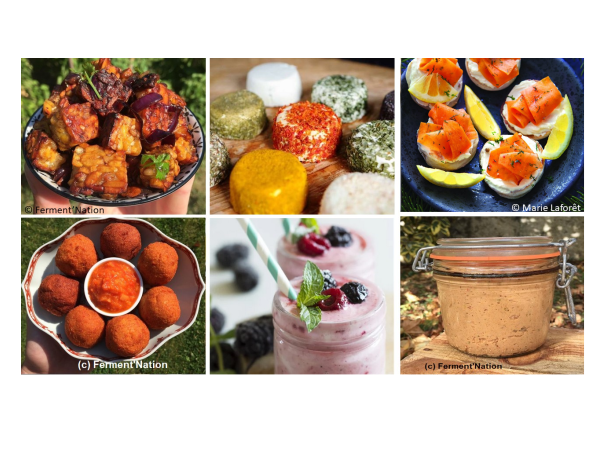
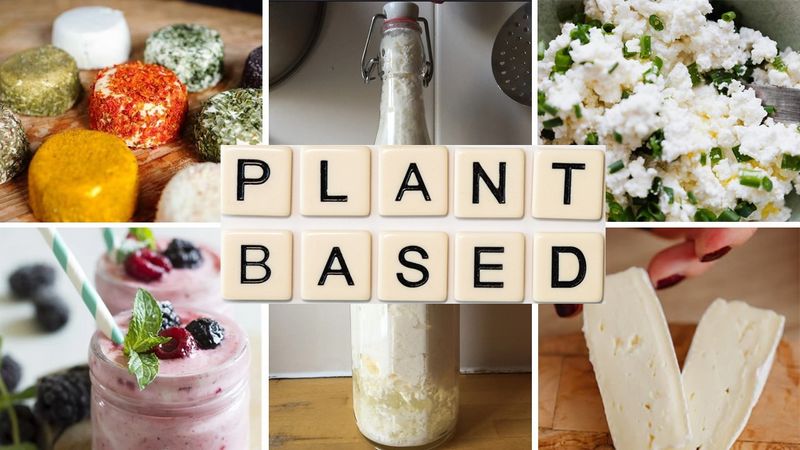
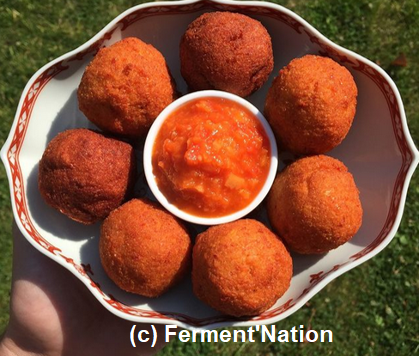
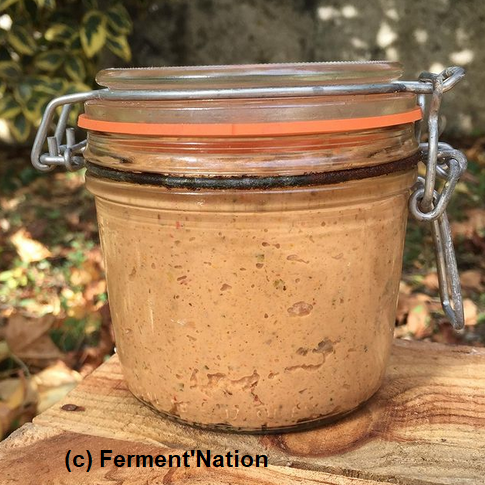
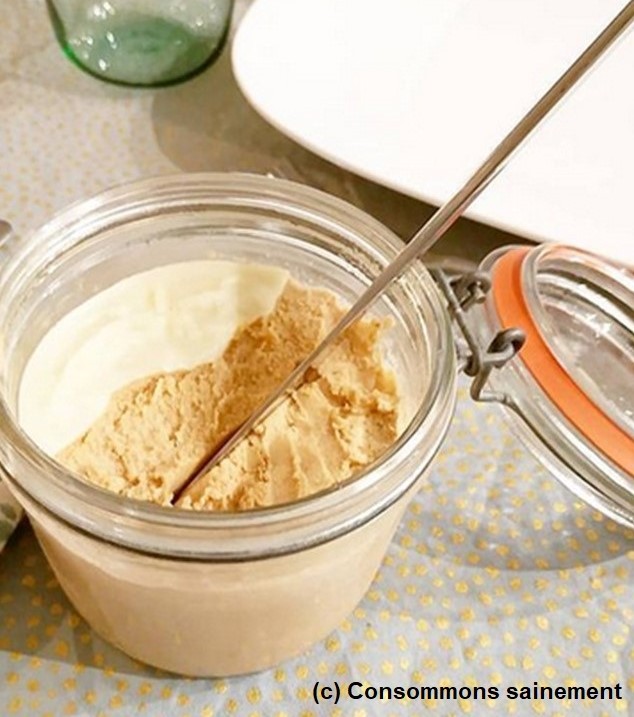
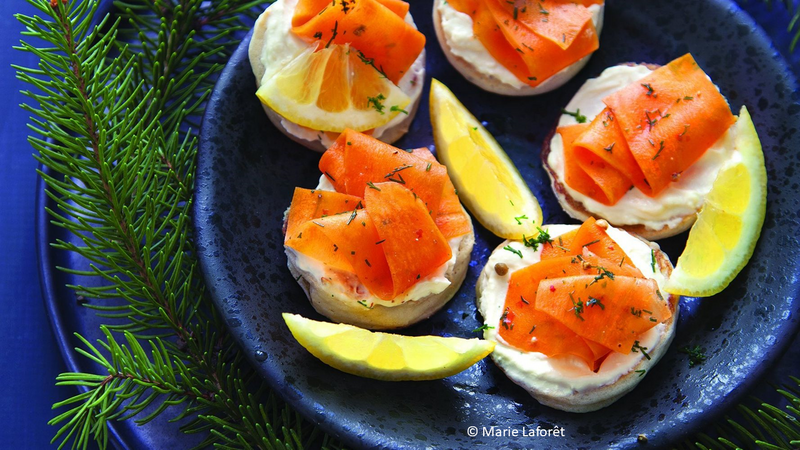
 Français
Français English
English Deutsch
Deutsch Español
Español Italiano
Italiano Português
Português